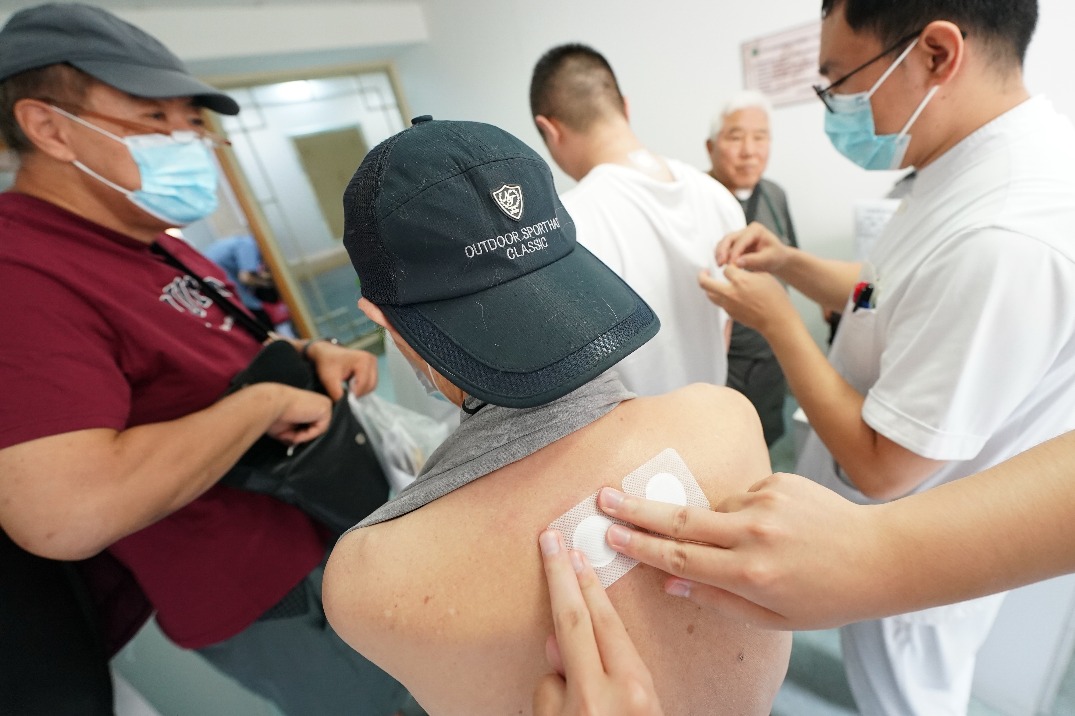Intelligent coal mines contribute to improving safety standards
China Daily | Updated: 2023-11-21 09:33

Mechanization, automation and intelligent upgrades have contributed to improved safety in coal mines, though the level of development of intelligent emergency equipment has remained inferior to demand, experts said.
"Intelligent coal mines are at a new stage in the development of comprehensive mechanization and the new direction of transformation in the mode of production," said Liu Yingjie, an academic leader at the Chinese Institute of Coal Science and chief scientist of China Coal Technology& Engineering Group.
"However, the intellectualization of mine emergency equipment is still in its initial stages and its research and development lags behind the needs of mine safety production," Liu said at the sub-forum on work safety of the 2023 Belt and Road Ministerial Forum for International Cooperation in Disaster Risk Reduction and Emergency Management on Friday.
The forum comes after a number of high-profile mining accidents have been reported. In February, 53 people were killed in a mine collapse in the Inner Mongolia autonomous region. In September, 16 people were killed in an explosion at a coal mine in Guizhou. More recently, a blaze at a mining company building in Shanxi province left 26 dead.
Providing 870 million metric tons of coal last year, one-fifth of total national coal production, Ordos in the Inner Mongolia autonomous region has tapped digitalized technology to enhance working efficiency and empower mine safety.
"Safe production in coal mines is both a political task and a major responsibility," said Ordos Vice-Mayor Wu Jianxun. "Ordos insists on deeply integrating digitalization into the whole process of safe production to improve the essential safety level of coal mines."
The city has built a risk monitoring and early warning system by applying robots for automated patrols, utilizing optical fiber for temperature checks and conducting real-time monitoring on pile slopes.
With the theme "pioneering safety through innovation, harnessing intelligence for emergency response", the sub-forum also introduced advanced emergency rescue technologies.
China has invented a series of personal protection products like positive-pressure oxygen respirators and chemical oxygen self-rescuers, solving the problem of emergency treatment of the injured unable to breathe in the toxic and harmful gas environments in disaster areas.
With a transmission distance of no less than 1,000 meters between wireless repeaters and a system delay of no more than two seconds, wireless communication systems for mine disaster relief have been utilized by 14 national mine emergency rescue teams to transmit on-site audio and video, environmental parameters and vital signs of the rescue team to the command center so as to guarantee the safety of rescuers and enhance the efficiency of rescue.
Based on big data, Internet Plus and cloud computing, China has developed an emergency rescue management information platform to assist experts in carrying out remote, real-time, visual and interactive accident diagnosis, rescue and investigation, improving the ability of coal mine accident prevention and control.
Under the General Office of the State Council's guideline to strengthen the construction of online monitoring networks and comprehensive information platforms for mine safety in June, the country has established multilayered surveillance interplay among national authorities, local administrations and coal mines, said Shi Baozhong, head of the National Mine Safety Administration's coal mine safety supervision department.
Innovative safety supervision and intelligent construction in coal mines have brought about a drop in the number of major safety accidents. From 2012 to last year, the annual number of mine accidents decreased by 75.8 percent to 367, and the mine death toll fell by 77.6 percent to 518, according to the administration.
While the overall mine production pattern in China is stable and the number of non-coal mine accidents continues to decline, coal mine accidents have rebounded, Liu Tao, a senior official at the administration, told a news conference in July.
Administration figures suggest the death toll per million tons of coal mined fell by 86 percent between 2012 and 2022 to around 0.12.
"Concerning coal mine safety, China is behind countries like the United States and Australia, whose million-tons death rate in coal mines remains below 0.02," said Liu.
He added that deep mining has brought about increasingly severe problems like high ground pressure, high gas amounts, high water pressure and high ground temperature, raising the bar for emergency rescue after accidents like gas explosions, mine collapses and transportation accidents.
Compared with the complex geological conditions, the intelligence level of mine emergency equipment is deficient with low information integration and unstable operation systems, he said.
Liu proposed enhancing research on fundamental principles of major accidents and their application, investing in the development of core technology in intelligent coal mines and reinforcing legal guarantees on technical standards and norms.
























